Related Research Articles

Recusancy, from the Latin recusare, was the state of those who refused to attend Anglican services during the history of England, Wales and Scotland. The term was first used to refer to people, known as recusants, who remained loyal to the pope and the Roman Catholic Church and did not attend Church of England services.
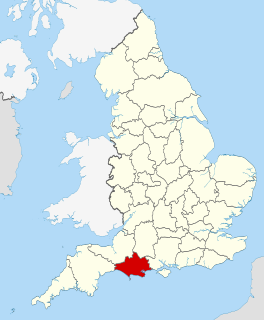
Dorset is a county in South West England on the English Channel coast. The ceremonial county comprises the unitary authority areas of Bournemouth, Christchurch and Poole and Dorset. Covering an area of 2,653 square kilometres (1,024 sq mi), Dorset borders Devon to the west, Somerset to the north-west, Wiltshire to the north-east, and Hampshire to the east. The county town is Dorchester which is in the south. After the reorganisation of local government in 1974, the county's border was extended eastward to incorporate the Hampshire towns of Bournemouth and Christchurch. Around half of the population lives in the South East Dorset conurbation, while the rest of the county is largely rural with a low population density.

Henry IV, also known by the epithet Good King Henry or Henry the Great, was King of Navarre from 1572 and King of France from 1589 to 1610. He was the first monarch of France from the House of Bourbon, a cadet branch of the Capetian dynasty. He was assassinated in 1610 by François Ravaillac, a fanatical Catholic, and was succeeded by his son Louis XIII.

Bournemouth is a coastal resort town on the south coast of England. At the 2011 census, the town had a population of 183,491. With Poole to the west and Christchurch in the east, Bournemouth is part of the South East Dorset conurbation, which has a population of 465,000.

Christchurch is a town and civil parish in Dorset on the south coast of England. The town covers an area of 19.5 square miles (51 km2) and had a population of 48,368 in 2013. It adjoins Bournemouth to the west, with the New Forest to the east. Part of the historic county of Hampshire, Christchurch was a borough within the administrative county of Dorset from 1974 until 2019, when it became part of the new Bournemouth, Christchurch and Poole unitary authority.

Henry Constable was an English poet, known particularly for Diana, one of the first English sonnet sequences. In 1591 he converted to Catholicism, and lived in exile on the continent for some years. He returned to England at the accession of King James, but was soon a prisoner in the Tower and in the Fleet. He died an exile at Liège in 1613.

Thomas Percy was a member of the group of provincial English Catholics who planned the failed Gunpowder Plot of 1605. A tall, physically impressive man, little is known of his early life beyond his matriculation in 1579 at the University of Cambridge, and his marriage in 1591 to Martha Wright. In 1596 his second cousin once removed, Henry Percy, 9th Earl of Northumberland, appointed him constable of Alnwick Castle and made him responsible for the Percy family's northern estates. He served the earl in the Low Countries in about 1600–1601, and in the years before 1603 was his intermediary in a series of confidential communications with King James VI of Scotland.
John Payne (1532–1582) was an English Catholic priest and martyr, one of the Catholic Forty Martyrs of England and Wales.

William Manning was a British merchant, politician, and Governor of the Bank of England.
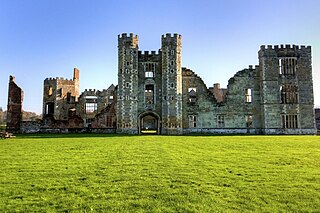
Anthony-Maria Browne was an English peer during the Tudor and Stuart period.
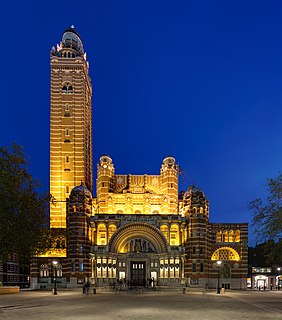
The Catholic Church in the United Kingdom is part of the worldwide Catholic Church in communion with the Pope. While there is no ecclesiastical jurisdiction corresponding to the political union, this article refers to the Catholic Church's geographical representation in mainland Britain as well as Northern Ireland, ever since the establishment of the UK's predecessor Kingdom of Great Britain by the Union of the Crowns in 1707.
Eustace White, one of the Catholic Forty Martyrs of England and Wales. Born in Louth, Lincolnshire in 1559, he converted to Catholicism and was disowned by his father. He travelled to Europe to study for the priesthood and was ordained, probably at the Venerable English College, Rome in 1588. He returned to England for his ministry later that year - the year of the Spanish Armada. He thus began his ministry just as anti-Catholic feeling was reaching fever pitch.
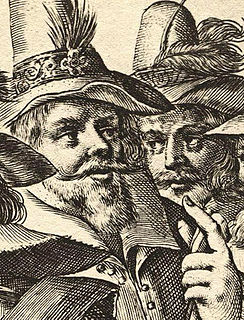
John (Jack) Wright, and Christopher (Kit) Wright, were members of the group of provincial English Catholics who planned the failed Gunpowder Plot of 1605, a conspiracy to assassinate King James I by blowing up the House of Lords. Their sister married another plotter, Thomas Percy. Educated at the same school in York, the Wrights had early links with Guy Fawkes, the man left in charge of the explosives stored in the undercroft beneath the House of Lords. As known recusants the brothers were on several occasions arrested for reasons of national security. Both were also members of the Earl of Essex's rebellion of 1601.

The History of Bournemouth and human settlement in the surrounding area goes back for thousands of years.

Philipp Ludwig of Neuburg was the Duke of Palatinate-Neuburg from 1569 until 1614.
The Salisbury and Dorset Junction Railway was a railway that ran in the English counties of Wiltshire, Hampshire and Dorset from 1866 until its closure in 1964. Working from Salisbury, trains left the Salisbury to Southampton line at the remote Alderbury Junction. Here there was a signal box, some railway cottages and two platforms on the main line for staff use only. The line ambled south through rural surroundings to meet the Southampton and Dorchester Railway at West Moors. Trains continued through Wimborne to Poole and Bournemouth West.
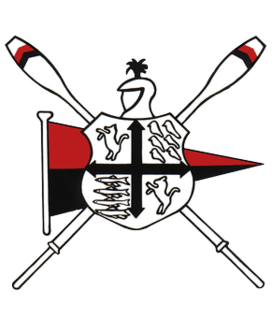
Bournemouth Rowing Club, formerly known as Westover and Bournemouth Rowing Club, was founded in 1865 and is the oldest club in Bournemouth. It competes in coastal rowing regattas organised by the Hants and Dorset Amateur Rowing Association on the South Coast of England. The club used to be located next to the Central Pier on the West Beach, but was evicted by Bournemouth Borough Council to make way for redevelopment. The club now operates out of a shared boathouse on the river Stour at Iford.
Dorset is a county in South West England on the English Channel coast. The ceremonial county comprises the area covered by the non-metropolitan county, which is governed by Dorset County Council, together with the unitary authorities of Poole and Bournemouth. Dorset is an average sized county with an area of 2,653 square kilometres (1,024 sq mi); it borders Devon to the west, Somerset to the north-west, Wiltshire to the north-east, and Hampshire to the east. Around half of Dorset's population lives in the South East Dorset conurbation. The rest of the county is largely rural with a low population density.
References
- ↑ Herbermann, Charles, ed. (1913). . Catholic Encyclopedia . New York: Robert Appleton Company.
- ↑ Dorset Elizabethans At Home and Abroad, by Rachel Lloyd, 1967, pub John Murray, Albemarle Street, London, p.114.